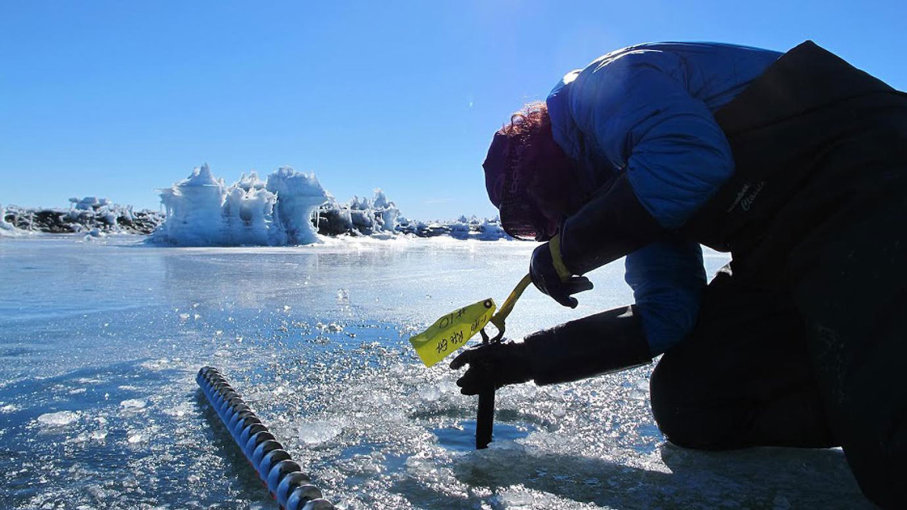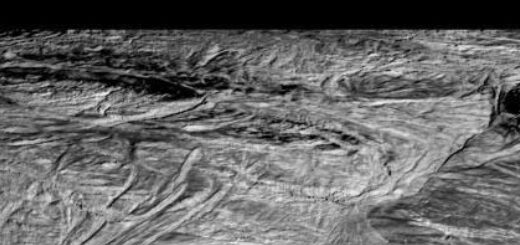Antarctic Prone To ‘Ice Quakes’ Every Night, Study Finds

There’s a corner of the frigid Antarctic where the ice itself shivers at night, according to research published in the journal Annals of Glaciology in December 2018.
From late November, 2016 to mid-January, 2017, lead author Douglas R. MacAyeal and his team gathered seismic data on the McMurdo Ice Shelf, a sheet of frozen water that encases part of Antarctica’s Ross Sea.
Out on the ice, the team set up two seismograph stations. One of them — dubbed the “wet station” — was placed in an area where meltwater lakes were present at and below the surface. Meanwhile, the so-called “dry station” was deposited on a body of compact snow roughly 20 kilometers (12.4 miles) away.
Those areas yielded wildly different readings. Every night, from late November to mid-December, the equipment at the wet station would record what MacAyel describes in a press release as “tens, hundreds, [or] thousands” of extremely small seismic events. (Each one began and ended in less than a second.)
Nothing like that was observed at the dry station, which mostly picked up anthropogenic, or “man-made” rumblings produced by nearby field vehicles. Yet the wet station quakes were clearly of natural origin. MacAyel and his colleagues hypothesize that they’re linked to the area’s subsurface water deposits.
“In these ponds,” MacAyel says in that same release, “there’s often a layer of ice on top of melted water below, like what you see in a lake that’s only frozen on top. As the temperature cools at night, the ice on the top contracts, and the water below expands as it undergoes freezing. This warps the top lid, until it finally breaks with a snap.”
For decades, scientists have known that ice can generate seismic activities — many of which are very small in scale. A well-documented example would be the alarmingly loud “frost quakes” that allegedly besieged the Chicago area this year.
When most liquids freeze, they lose volume and contract. But water isn’t like most liquids; the freezing process actually causes H2O to expand. Frost quakes are what can happen when groundwater that’s seeped into a plot of soil or rock rapidly freezes. Just as you’d expect, as the liquid water turns into ice, it quickly expands. The resultant pressure can cause the surrounding material to crack, sometimes with a booming noise that sounds like the roar of a shotgun.
Frost quakes belong to a larger family of phenomena known as “ice quakes.” This label’s also been applied to the earthquake-like events triggered by glaciers as they skid across underlying pools of liquid water.
But the observations made by MacAyel’s group imply that the upper surface of an ice shelf can create its own quakes — which has never been suggested before. They hope future scientists will be able to monitor Antarctic melting trends by keeping tabs on these rumblings.



 Creators of mankind
Creators of mankind Description of “Tall white aliens”
Description of “Tall white aliens” Where they came from?
Where they came from? About hostile civilizations
About hostile civilizations The war for the Earth
The war for the Earth “Tall white aliens” about eternal life
“Tall white aliens” about eternal life Video: “Nordic aliens”
Video: “Nordic aliens” Aliens
Aliens Alien encounters
Alien encounters The aliens base
The aliens base UFO
UFO Technology UFO
Technology UFO Underground civilization
Underground civilization Ancient alien artifacts
Ancient alien artifacts Military and UFO
Military and UFO Mysteries and hypotheses
Mysteries and hypotheses Scientific facts
Scientific facts


















